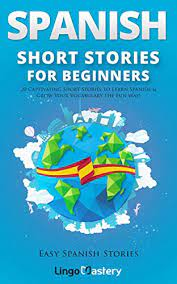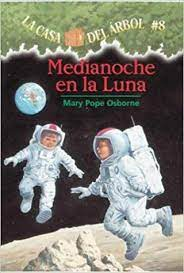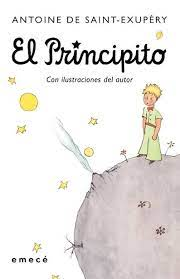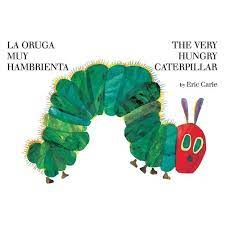¡Leer en español o inglés este verano! Read in English or Spanish this summer!
- Cheryl Johnson

- Jun 5, 2021
- 5 min read
English Version below

La lectura, espero que este tema te haya llamado la atención porque te encante tanto como a mí. Pero no es tan fácil leer en un nuevo idioma. Sí, sabemos que cuando nuestros instructores nos piden que leamos en nuestros libros de texto u otras fuentes, estamos mejorando nuestras habilidades lingüísticas. ¿Pero estás leyendo en tu segundo idioma fuera de la clase? ¿Podrías hacerlo este verano?
Más específicamente, ¿conoces las diferentes técnicas / materiales que los estudiantes de idiomas pueden usar para mejorar su inglés o español? En primer lugar, hablemos de dos tipos de lectura que se utilizan en el aprendizaje de un segundo idioma: lectura intensiva frente a lectura extensiva.
La lectura intensiva es la estrategia más común utilizada dentro de una clase de idiomas, ya sea en línea o en persona. Cuando leemos intensamente, examinamos un texto en detalle para "extraerlo" en busca de significado; podemos comenzar con una primera lectura para obtener la 'esencia' o las ideas principales, luego podemos volver a leerlo para observar más de cerca las palabras o frases desconocidas, y luego podemos leer el texto por tercera vez para responder preguntas y discutir más el significado. A veces, leemos en voz alta para practicar la pronunciación, la entonación y el ritmo del idioma. La lectura intensiva puede ser una parte eficaz del aprendizaje de idiomas.
La lectura extensiva se trata de leer mucho más texto en un momento dado para ver el idioma en contexto sin otro objetivo que no sea obtener información o placer de la lectura. No es necesario comprender cada palabra, y la teoría es que con el tiempo, el significado se hará a través del contexto. La idea es leer, leer y leer un poco más. El desafío para los estudiantes principiantes e intermedios es encontrar fuentes de material de lectura independiente porque a nadie le gusta tener que usar un diccionario para cada segunda palabra. Mira estos …
1) Si estás aprendiendo inglés, usa la opción Simple English en Wikipedia. Por ejemplo, busca un tema como "tulipanes", luego pruébalo en Simple English (búscalo en "languages" en el lado izquierdo de la página web). Esto está hecho para cualquier estudiante de inglés que aún no tenga un vocabulario completo. Todavía no he encontrado un equivalente en español.
2) Intenta encontrar lecturas niveladas o calificadas en la biblioteca o en línea. Son novelas o lecturas no ficción en las que se controla la sintaxis y el vocabulario para que el texto sea más accesible. Todavía estoy explorando lo que existe en español, pero recomiendo Spanish, Short Stories for Beginners.
3) Intente leer libros en dos idiomas. Estos son libros que tienen dos idiomas en la misma página que pueden brindar asistencia en la lectura. O intente leer el mismo libro, primero en su propio idioma y luego en su idioma de destino.

4) Lea las noticias en su idioma de destino, pero sobre un tema familiar. Consulte News in Slow English and News in Slow Spanish como una aplicación gratuita. Lo que me gusta de estos es que tienen una transcripción escrita para que la lea mientras escucha.
5) Sí, considere leer libros para niños, pero no se desanime si los encuentra difíciles. Están escritos para lectores de primer idioma y no necesariamente simplifican el lenguaje; ¡ pero hay menos texto con más ilustraciones!
6) Sí, lee esas historias de Duolingo. Y escuche esos podcasts de Duolingo en dos idiomas mientras lee sus transcripciones escritas. ¡Grandes temas! ¡Diálogos divertidos!
Ya sea que use estrategias de lectura intensivas o extensivas, y necesita ambas, leer fuera de la clase ampliará su vocabulario y verá esos verbos en acción. Claro, no es tan simple como en su primer idioma, pero se vuelve un poco más fácil con el tiempo. ¿Quién sabe? ¡Quizás EHBA va a comenzar un club de lectura!

Could you read in your second language this summer?
Reading, I hope this topic caught your eye because you love it as much as I do. But, it isn’t nearly as simple to read in a new language. Yes, we know that when our instructors have us read excerpts from our Aula textbooks or other sources, that we are pushing our language skills forward. But are you reading in your second language outside of class? Could you make it a goal for this summer?
More specifically, are you aware of different techniques/materials that language learners can use to improve their English or Spanish? First of all, let’s discuss two types of reading that are most used in second language learning: intensive reading vs. extensive reading.
Intensive reading is perhaps the most common strategy used within a language class, either online or in-person. When we read intensively, we examine a text in detail in order to ‘mine it’ for meaning; we might start with a first reading to get the ‘gist’ or main ideas, then we might reread it to look more closely at unknown words or phrases, and then we might even read the text a third time in order to answer questions and further discuss the meaning. Sometimes, we will be asked to read aloud so that we might practise pronunciation, intonation and the rhythm of the language. Intensive reading can be an effective part of language learning.
Extensive reading is about reading much more text in a given time in order to ‘see language’ in context with no other goal other than to gather information or pleasure from the read. One doesn’t need to understand every word, and the theory is that over time, meaning will be made through context. The idea is to read, read, and read some more. The challenge for beginning and intermediate learners is finding sources of independent reading material because no one enjoys having to use a dictionary for every second word! Check these out...
1) If you are learning English, use the Simple English option in Wikipedia. For instance, look up a topic like ‘tulips’, then try it in Simple English (look at languages on the left side of the webpage). This is made for any English learners who may not have a full vocabulary yet. I do not see an equivalent in Spanish yet.
2) Try finding levelled or graded readers at the library or online. These are often novellas or non-fiction where the syntax and vocabulary are controlled to make the text more accessible. I am still exploring what exists in Spanish, but in the meantime, I do recommend Spanish, Short Stories for Beginners.
3) Try reading dual-language books. These are books that will have two languages on the same page which can provide instant assistance in reading. Or try reading the same book, first in your own language, then in your target language.
4) Read the news or a non-fiction online article in your target language, but about a familiar topic. Check out News in Slow English and News in Slow Spanish as a free app. What I like about these is that they provide a written transcript for you to read while listening.
5) Yes, consider reading children’s books, but don’t be discouraged if you find them difficult. They are written for first-language readers and don’t necessarily simplify language; there’s just less text with more illustrations!
6) Yes, read those Duolingo stories. And listen to those Duolingo dual-language podcasts while reading their written transcripts. Great topics! Fun dialogues!
Whether using intensive or extensive reading strategies, and you do need both, you will find that reading outside of class will expand your vocabulary and you will see those verbs in action. Sure, it’s not nearly as simple as in your first language, but it gets a little easier with time. Who knows? Maybe EHBA will encourage you to start a book club?Happy Reading this summer!
















Comments